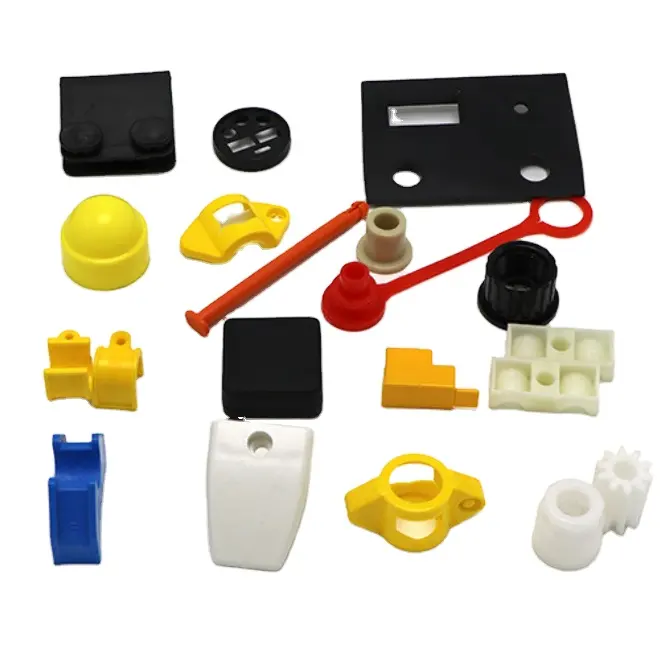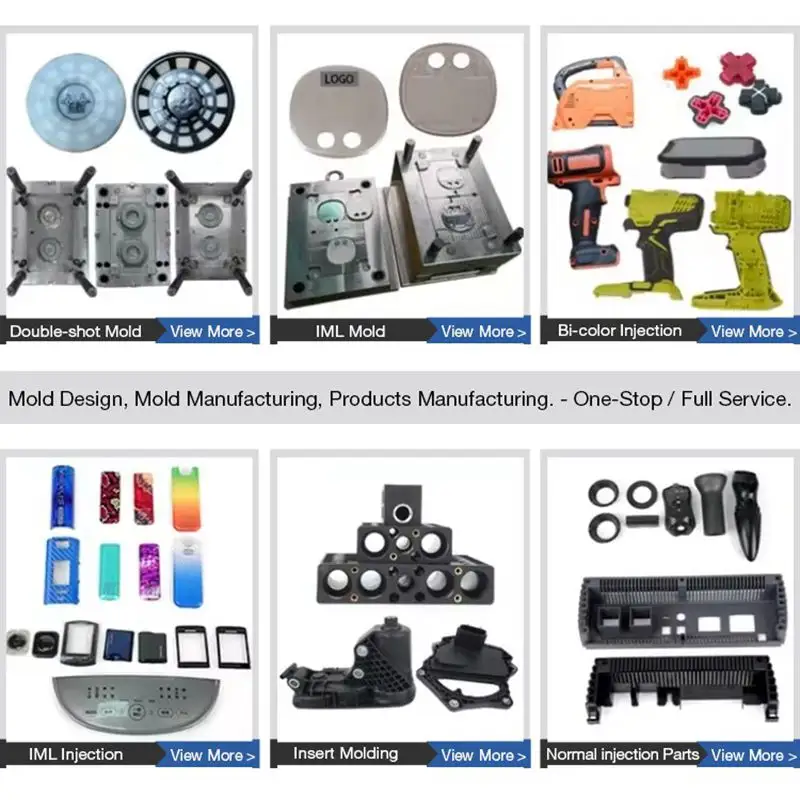- May 3, 2025
- Posted by: feinuojixie
- Category: Injection Molding News


In today’s fast-paced manufacturing world, businesses are constantly seeking ways to reduce costs while improving efficiency. One of the most effective solutions to achieve both goals is by utilizing plastic injection molded parts. This advanced manufacturing technique has become a cornerstone of modern industry, offering both time and cost savings while improving the overall quality of products. In this article, we will explore how plastic injection molded parts can be a game-changer for your business.


What Are Plastic Injection Molded Parts?
Plastic injection molding is a manufacturing process that involves injecting molten plastic into a mold under high pressure. The plastic then cools and hardens, taking the shape of the mold. This process allows for the production of complex and precise parts at high volumes, making it an ideal choice for businesses looking to create durable, consistent products.
Industries such as automotive, medical, consumer electronics, and packaging heavily rely on plastic injection molded parts. These parts are used in everything from car bumpers to medical devices, electronic housings, and even everyday household items.
The Role of Plastic Injection Molded Parts in Modern Manufacturing
Plastic injection molded parts have revolutionized the manufacturing process by offering a level of precision and consistency that is difficult to achieve with traditional methods. Unlike manual manufacturing or casting processes, injection molding can produce thousands of identical parts with minimal variation. This consistency ensures that each part meets the same high standards, reducing the likelihood of defects and increasing the overall quality of the finished product.
The speed and automation involved in plastic injection molding also play a crucial role in enhancing productivity. With the right molds, businesses can produce large quantities of parts in a short period, optimizing manufacturing efficiency.
Time Efficiency: The Key Advantage of Plastic Injection Molding
One of the most significant advantages of plastic injection molding is the speed at which parts can be produced. The process is highly automated, allowing for faster production cycles compared to traditional methods. Once the mold is designed and set up, producing each part takes only a matter of seconds or minutes, depending on the complexity of the design.
This speed reduces the overall time required for production, enabling companies to meet tight deadlines and get their products to market more quickly. Furthermore, the automated nature of plastic injection molding reduces the need for manual labor and adjustments, which further streamlines the process and frees up resources for other tasks.
By cutting down on production time, businesses can increase throughput and improve their ability to scale operations quickly to meet demand.
Cost-Effectiveness: How Plastic Injection Molded Parts Save Money
Plastic injection molded parts are not only time-efficient but also highly cost-effective. The precision of the process means that material waste is kept to a minimum. Unlike other methods, where excess material may need to be trimmed or discarded, plastic injection molding ensures that almost every bit of the injected material is used to create the final product. This efficiency directly translates into lower material costs.
In addition to material savings, plastic injection molding also reduces labor costs. The process is highly automated, meaning fewer workers are needed to operate the machinery, monitor production, and perform quality checks. This not only lowers labor costs but also reduces the potential for human error, further ensuring the consistency of the final product.
Another significant factor is the economies of scale achieved during large production runs. Once the initial mold has been created, it can be used to produce thousands, or even millions, of identical parts. The cost per part decreases as the volume increases, making plastic injection molding an ideal solution for high-volume production.
Durability and Performance Benefits of Plastic Injection Molded Parts
Plastic injection molded parts are known for their durability and performance. The process produces parts with a high degree of strength and resistance to wear and tear. This is especially important in industries like automotive and medical manufacturing, where parts must withstand harsh conditions or perform under stress.
By producing parts with consistent material properties and precision, the likelihood of part failure is reduced, leading to fewer returns, repairs, and replacements. This long-term reliability contributes to overall cost savings, as businesses can count on their plastic injection molded parts to perform well over time, reducing the need for frequent maintenance.
Sustainability and Environmental Impact of Plastic Injection Molding
As sustainability becomes an increasingly important consideration in manufacturing, plastic injection molded parts offer a more environmentally friendly option compared to many traditional methods. The precision of the molding process reduces material waste, and many manufacturers are now using recycled plastics or bioplastics to create parts, further reducing the environmental impact.
Moreover, the energy efficiency of plastic injection molding has improved over the years. Modern machines consume less energy during the molding process, helping businesses reduce their carbon footprint. The ability to produce large quantities of parts with minimal waste also contributes to a more sustainable manufacturing process overall.
Applications of Plastic Injection Molded Parts Across Industries
Plastic injection molded parts are used across a wide range of industries. In the automotive sector, these parts can be found in everything from dashboard components to exterior body panels. In the medical field, plastic injection molding is used to produce precision parts for medical devices, syringes, and surgical instruments. The consumer electronics industry also relies on injection molded parts for durable housings and intricate components.
Plastic injection molding’s versatility allows it to be used in numerous applications, from consumer products like toys and kitchenware to industrial components used in machinery and construction. The ability to create complex shapes and designs with high precision makes it an invaluable tool for any industry that requires durable, cost-effective parts.


How to Maximize Time and Cost Savings with Plastic Injection Molding
To fully capitalize on the time and cost savings offered by plastic injection molding, businesses should focus on optimizing their designs and material choices. By designing parts that are easy to mold and require minimal post-processing, manufacturers can reduce both production time and costs.
Choosing the right material is also crucial in optimizing the cost-effectiveness of the process. Some materials are more suited to high-volume production, while others may offer additional performance benefits. By working closely with a trusted plastic injection molding partner, businesses can make informed decisions that align with both their budget and product requirements.
Selecting the right molding company is also essential. A reliable and experienced injection molding partner can help businesses refine their designs, choose the best materials, and ensure the highest level of quality control throughout the manufacturing process.
Conclusion
Plastic injection molded parts offer significant time and cost benefits for businesses across various industries. By leveraging the speed, precision, and cost-efficiency of this manufacturing process, companies can reduce production time, lower material waste, and save money on labor. Additionally, the durability and sustainability of plastic injection molded parts ensure that businesses receive high-quality products that perform well over time.
Incorporating plastic injection molded parts into your production process is a smart move for any business looking to stay competitive in today’s fast-moving market. By embracing this technology, you can unlock new efficiencies, reduce costs, and improve your bottom line.
